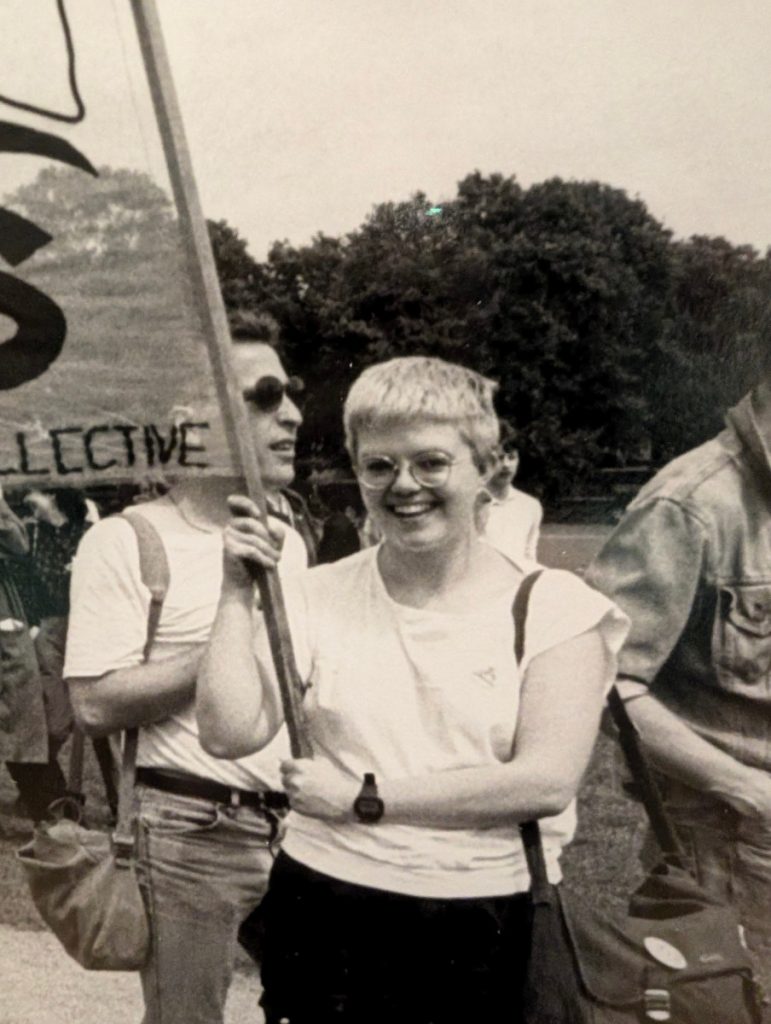.. is the title of a touring exhibition from the Tate, with the subtitle 'Art and activism in the UK 1970-1990'.
I saw it in August 2024 at Modern Two, part of Scotland's National Galleries in Edinburgh.
The final room, "No such thing as society",[1]".. and who is society? There is no such thing!", Margaret Thatcher talking to Woman's Own magazine, 1988 contains a large chunk of the queer stuff.
In the online copy of the exhibition guide including the captions for all of the pictures, the word 'bisexual' does not appear once. There are ten uses of 'LGBT's/'LGBTQ..'s seven of which aren't in URLs or collection titles, twenty eight uses of 'gay', and forty two uses of 'lesbian'.
But the room does have a couple of photos where I went 'I recognise them from the bi community!'. Pam Isherwood's Pride march from 1985:
Holding the banner on the right of the photo is Kate Fearnley
The other maker of the banner, Stephen Holdsworth, is on the left.
Apparently, there are photos of Mark Ashton, of 'Lesbians and Gays Support the Miners' fame amongst other causes, holding the banner but this is one of very few showing Kate holding it – and a shot of two men holding a banner probably wouldn't have made it into the exhibition.
In Edinburgh, where Kate has lived and worked for decades, the picture is low down by the floor to the point that you have to bend down to see it, but the Tate's guide reckons it was on the top row there.
The other photo is from Dell LaGrace Volcano, On The Way There, taken on the day of London's Pride event in 1988:
The person in the middle..
.. named as 'Sarah' on the label is, unless I am very much mistaken, this Sarah, also seen in the Double Trouble article a couple of years earlier.
Notes
| ↑1 | ".. and who is society? There is no such thing!", Margaret Thatcher talking to Woman's Own magazine, 1988 |
|---|



